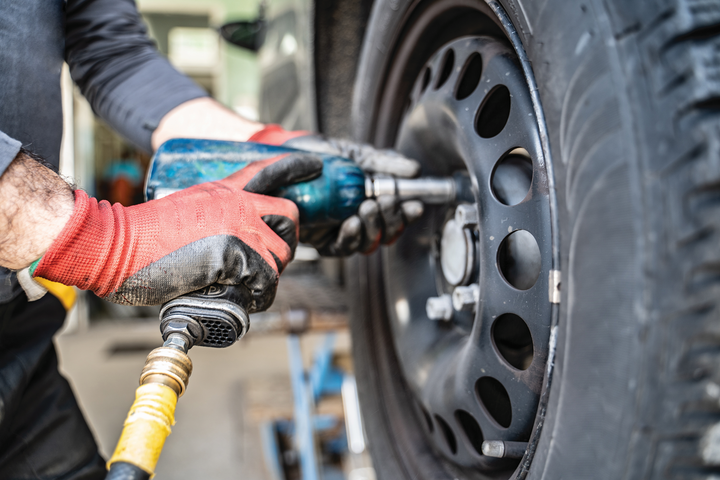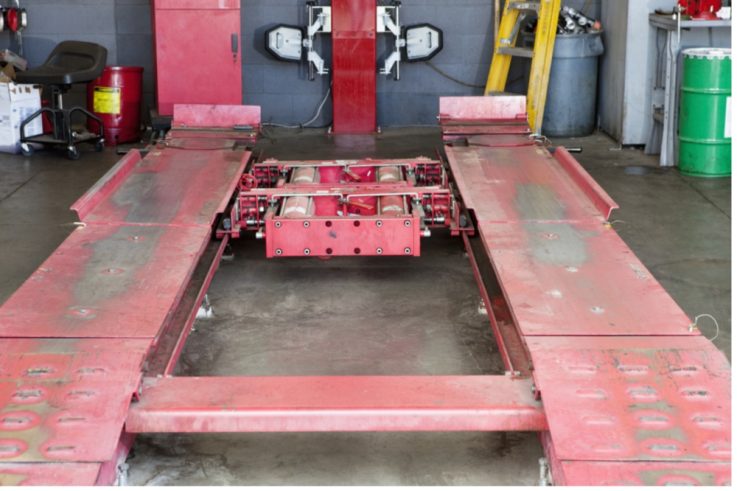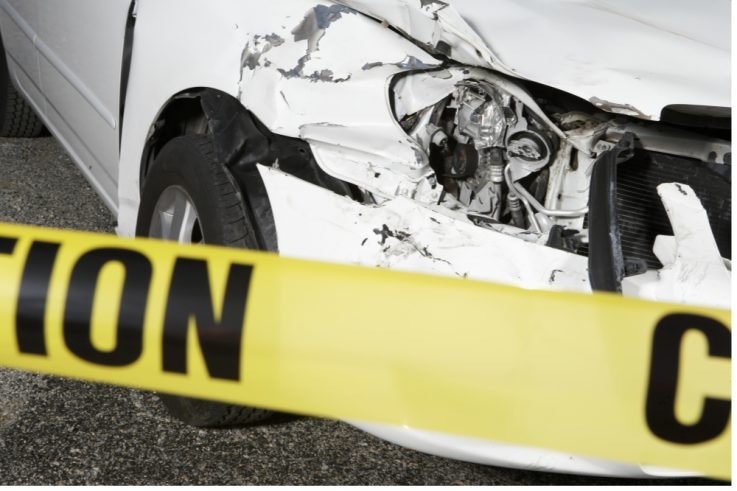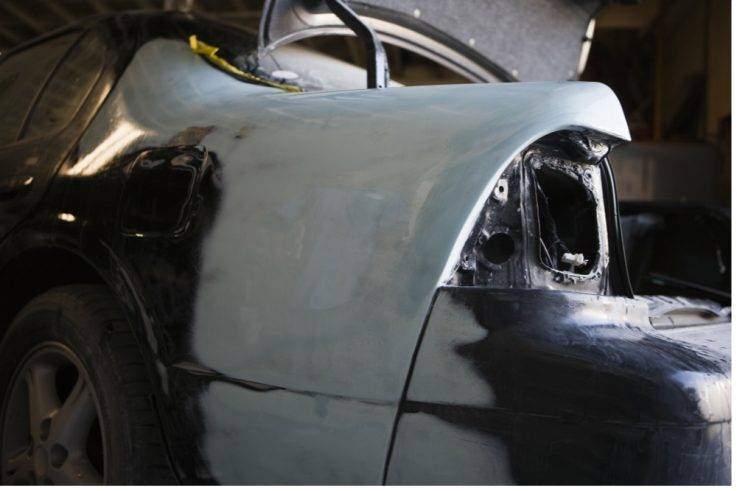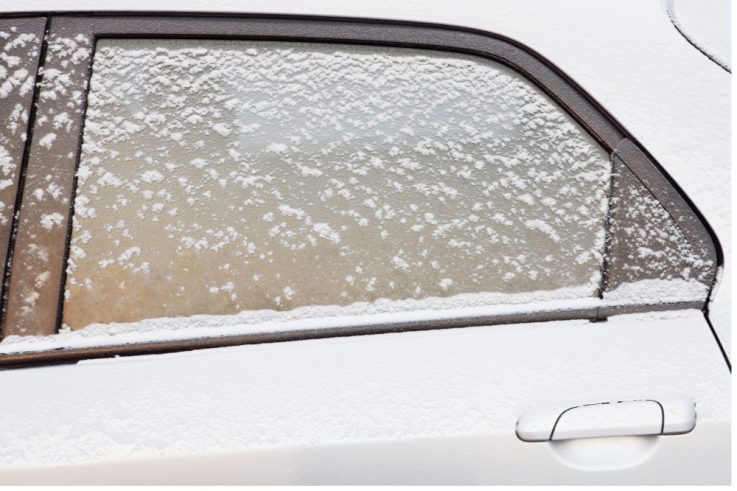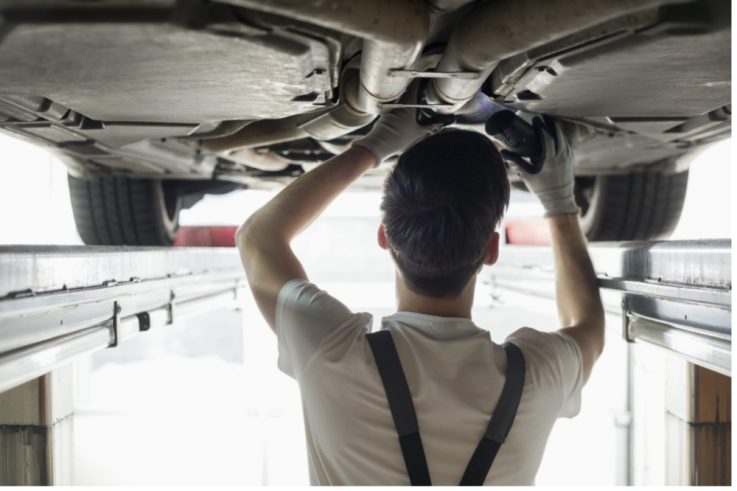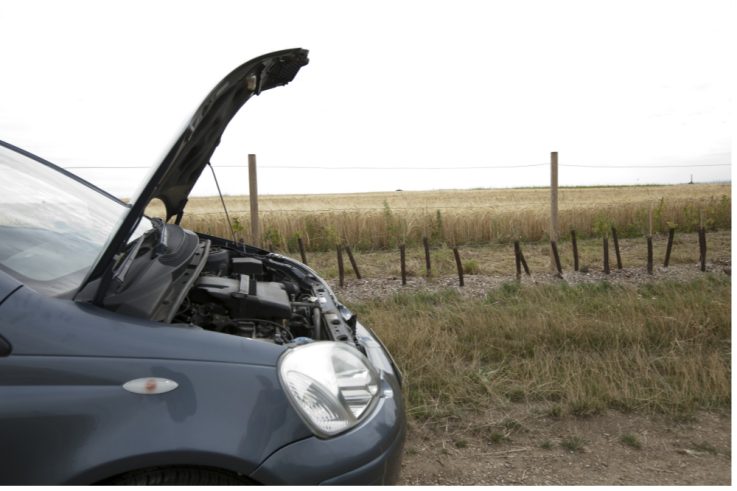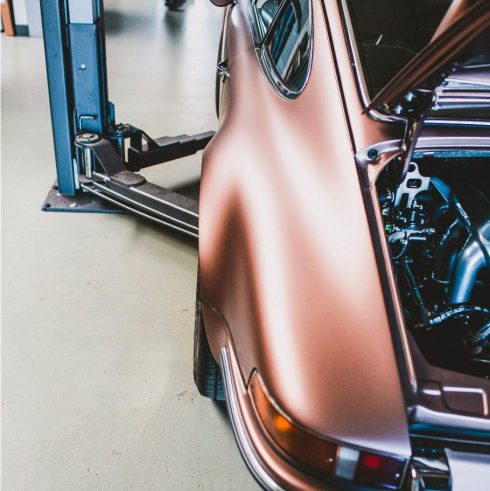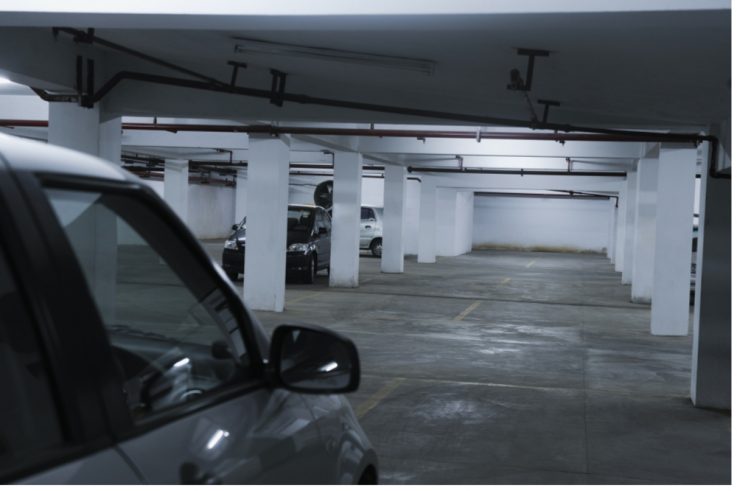- by ShowcaseCollisionInc
- 0
The Ultimate Guide To Tire Repair
Almost everyone has had the experience where they’ve been driving along the roadway and run over something that punctures a tire and leaves you with a flat. Although you might be able to replace the tire yourself right alongside the roadway, you’ll eventually need to evaluate what to do with the flat tire. Depending on where exactly is the puncture, as well as the severity of the puncture, you may salvage the tire, and don’t need to replace it.
The way to determine whether or not you can repair a tire is by assessing exactly where the damage took place. You can´t repair the tire if it has a puncture either on the shoulder or on the sidewall. It’s also true that you cannot repair a tire punctured by an object that is bigger than a quarter-inch in diameter. Other than these two main stipulations, most other situations can get effective repairs, so that you can salvage the tire rather than replace it.
You might think that you’re best off replacing it regardless of the circumstances. You’ll probably want to get some mileage out of it before discarding it if you have just purchased new tires. There are safe ways to make tire repairs so that you don’t have to worry about the roadworthiness of any tire. Continue reading below to find exactly how to make a safe tire repair.
How to Safely Repair a Tire
First of all, it will be necessary to remove the tire from its rim, and conduct a thorough inspection of the inside and outside of the tire. This is necessary because even though a tire might appear to require a simple fix, it’s entirely possible that the bottom half of a nail or some other object could have damaged the interior sidewall. If you have determined that the tire is indeed repairable, you will next need to trim the damaged area, so it can be clean and stable.
Then you’ll need to pull a rubber stem from the inside out right through the puncture area so that you can seal off the internal portion of the tire. Again from the inside, buff the puncture area and apply vulcanizing glue. Then it will be possible to install a patch on the inner liner which covers the entire puncture area, and which will trigger a chemical reaction.
After this has taken place, you can mount the tire back on the rim, inflate it to the manufacturer’s specified tire pressure, and then check thoroughly for any leaks. If done properly, this repair procedure should take somewhere between 60 and 90 minutes, and at the end of that time, you’ll have a solid, reliable tire for use on the roads.
Tires You can’t repair
There are some situations in which you can’t simply repair a damaged tire, usually because of the severity of the puncture or the location where it occurred. If your damaged tire falls into any of the categories listed below, you should consider it non-repairable and it will be safest to simply discard the tire and purchase a new one. In situations where a puncture has occurred outside the repairable area, it is not safe to attempt to carry out repairs on the tire.
Viable tire repairs are primarily restricted to the crown or middle area of the tire. The crown is the center of the tread, usually about an inch to an inch and a half inside each shoulder of the tire. In most tires, you can consider the repairable puncture area as the area between the first major grooves on each of the two shoulders. In terms of the size of any puncture, the maximum size which is safely repairable for any passenger vehicle or light truck will be 1/4 inch in diameter.
If the puncture is any larger than this, the only safe thing to do is to completely take it out of service and replace it with a new one. If you should discover that there is a clearly noticeable bubble in any of the sidewall areas of your tire that damage has probably occurred by direct impact with a pothole, curb, or some other obstacle in the road. When you see this kind of bubble or bulge in a sidewall, you should consider it unrepairable, and the tire must be taken out of service.
Don’t use tire plugs
If you’ve ever been advised to use a tire plug in order to carry out repairs on a damaged tire, you should resist the temptation to save money and avoid using the tire plug altogether. A tire plug is an expandable object you can push into a damaged area from the outside, which theoretically can stop the leakage of air from occurring. You can then adjust this tire plug until any leaking air stops altogether from the damaged area.
The danger of this is that even though the leaking might stop, the ‘repaired’ tire is probably not safe to drive on the open road. While tire plugs can be very tempting because they deliver a quick fix, they are also prone to failure over a period of time, especially when driving at high speeds or over long distances.
It’s also possible for them to cause air to get trapped in between tread layers, and this will eventually cause the tread itself to separate. Once this happens, you’ll need to purchase a new tire anyway. It’s simply not a good idea to drive a vehicle that has had a tire repaired by a tire plug because there will always be some uncertainty in your mind about how long it will last, or whether it’s safe to drive. When you’re considering the safety of yourself and your family members, you just don’t want to take a chance on tire plug repairs.
- by ShowcaseCollisionInc
- 0
How Long Does It Take To Repair Collision Damage?
Obviously, all collisions are different, so it stands to reason that the time taken to repair damages will be different in every single case. Despite the fact that there is no specific and guaranteed time frame to accomplish the ideal collision damage repair process, it is possible to estimate the length of time required. All based on the type of collision and the level of resulting damage. Whenever an auto accident has occurred, a claims adjuster from your insurance company will assess the damage, and make an estimate of the cost associated with that damage.
After that, it might take anywhere between a couple of days and a whole week to find a collision company that can take on the work. When you do decide on one specific collision shop, you should have a conversation with them about how long they think the work will take. Many factors can influence that length, one of the main ones being how much of a backlog of work the shop already has. Availability of parts may be another factor that has an impact on repair time, as can be the level of difficulty associated with the necessary repairs.
Structural Collision Damage Repair
Whenever it’s necessary to repair a frame rail, a rear body structural panel, or something to do with the radiator, it will be necessary to use a frame machine and some specialty fixtures. This will ensure that the car gets measured right, and then it will be necessary to mount the car on the frame machine. In order to do this, it will be necessary to remove some electrical parts, like the suspension, and maybe the engine to fit the car on the frame machine. They might use specialty fixtures to attach the car to the machine. These fixtures are cast molds that get attached to the vehicle at specific points. All this is to ensure that the car’s weight gets distributed evenly over the frame machine.
Special Materials and Metals
Many new cars include specialty materials and metals that call for special equipment, special training, and technicians with considerable experience and skills. Some of these materials are carbon fiber, aluminum, and high-strength steel, all of which require equipment and training.
Many shops might not even have the resources to carry out these kinds of repairs, so you’ll need to find a collision shop that is appropriately equipped and can handle these repairs.
New Auto Technology
New technology is always getting added to the vehicles driven by owners, and while this makes your driving experience more enjoyable and safer, it can cause repairs to take much longer. For example, a car with a rear bumper that has high-tech options would require the car to be recalibrated with special equipment that tends to be fairly expensive.
If this isn’t done, your car simply won’t operate as it should after doing the collision damage repair work. Other high-tech options that need recalibration are rear-view cameras, lane-changing warning systems, and park distance control sensors.
Any kind of high-tech options like the ones included in your car will generally increase the length of time, to ensure the accuracy of the repair work.
Check the Damages
One of the biggest factors in figuring out how long repairs will take is to assess the exact kind of damage which has occurred to the vehicle. There might be a relatively simple fix involved such as replacing a bumper, and that will only take a couple of days to finish up.
However, it’s likely that you will need more intensive bodywork, and that will take much more time. In addition to this, it’s possible to discover the vehicle needs extra repair work, for instance, internal issues that were not readily observable in the immediate aftermath of the accident.
Any good collision shop will accurately address and fix whatever damage has occurred, and this may require having certain auto parts removed so that other possible damage can be found. All this takes more time because it’s necessary to find all damage and get your car back to a roadworthy condition.
Factors that Might Delay the Repair
Sometimes it’s difficult to estimate the time necessary for repairs until the work has actually begun. This is partly because they can discover other damage during the process. When you remove certain parts of the vehicle for closer inspection, it sometimes turns out that more extensive damage is discovered, which of course will add to the total repair time.
Whenever an estimate is made of the time necessary for vehicle repairs, you should always remember that that repair estimate can get invalidated by the discovery of additional damage.
However, if this is the case, the collision shop will always contact notify you about the changed status, because your approval will be necessary to proceed with additional repair work.
Repair Cost of Typical Collisions
In addition to the time necessary to make vehicle repairs, the cost of those repairs will also vary depending on all the circumstances related to the damage. There are some standard factors used when estimating the cost of repairs. For instance, the make and model will be important in assessing the total cost. Newer or more common vehicles generally use parts that are readily available, while older cars or those which are unique, will often call for ordered parts.
Depending on where these repair parts come from, it might take a while for them to get delivered and then installed by your collision experts. Another factor that contributes to the cost estimate is the kind of repairs that are necessary. For instance, work that is much more detailed, such as a complete paint job, will require considerably more time and will bump up the cost of repairs.
Labor cost is another important factor in the overall cost of repairing collision damage. Collision mechanics are specialists who work hard to ensure that your vehicle is roadworthy again, and they should be fairly compensated for their efforts. The number of hours of labor required, as well as the number of specialists working on your car, will have a major impact on the eventual cost of the collision damage repair.
- by ShowcaseCollisionInc
- 0
Types Of Auto Collisions
There are several different types of car accidents, and these can have a major impact on the investigation which takes place. As well as the whole claim procedure, if you should be making a personal injury claim. You can avoid many accidents by having more education and awareness about the types of auto collisions that can occur, and the circumstances which lead to them.
When you know more about the types of accidents that are possible, you may avoid such situations better. The idea is to be sure that you don’t become another highway statistic.
Causes of Auto Collisions
There are many causes that consistently appear as the triggers for several types of auto accidents:
- One of the most common causes is distracted driving. This includes eating and drinking, talking with others, watching videos, or tuning radios.
- Texting while you’re driving is another very common cause of auto accidents because statistically, you are 23 times more likely to be involved in an accident when you’re texting than if you had no distractions at all.
- Another major cause of auto accidents is drowsiness. Many drivers think they are alert enough to go on an extended driving trip, only to find out that they nod off now and then. This in turn creates extremely dangerous traffic conditions.
- Of course, driving under the influence of alcohol or some kind of drug is responsible for many accidents as well, because you cannot be as alert as you should be.
- Speeding is another popular cause since at a high rate of speed you don’t have adequate control of your vehicle.
- Reckless driving is similar to speeding, except that it involves behaviors that are dangerous in a traffic setting.
Now, these are the types of Auto Collisions we have seen and repaired:
Multiple Vehicle Collision
This type of accident involves two or more vehicles and generally results from a chain of events that got out of control. Pileups can be anywhere from relatively minor collisions to massive events which include many cars and vehicles. These kinds of multiple vehicle collisions can result in tremendous confusion. This usually involves a significant number of injuries and even fatalities.
Whether you get sucked into a multiple vehicle collision or not might depend on you being situationally aware, and making a point of keeping your distance from other vehicles.
Head-on Collision
These types of collision are not as common as many other types. This is because they involve collisions between vehicles going in opposite directions. There’s generally a loss of control, and one car directly swerves into the path of the other.
The best way to avoid a head-on collision is generally for you to steer to your right, and this may give the oncoming vehicle enough room to miss colliding with your vehicle and avoid a major accident.
Sideswipe Collision
It’s always a little bit risky when you’re driving immediately next to another vehicle. Almost any kind of distraction for the other driver might cause them to drift into your lane. This could result in anything from a small bump, to a blow that disables your vehicle.
The best way to avoid sideswipe collisions is to make a point of keeping your blind spots in sight. Also, be aware when other drivers are coming too close to your vehicle.
T-Bone Accident
This is one of the most dangerous types of accidents there is because it involves one vehicle crashing into the side of another vehicle. Most often this T-Bone occurs on the driver’s side of the vehicle. It can result in broken bones, concussions, and in a worst-case scenario, even fatality.
These kinds of collisions are generally quite sudden and difficult to avoid, so the saving grace may be the fact that you have your seatbelt firmly locked, so you can avoid being thrown about by the impact.
Vehicle Rollover
It happens sometimes in auto accidents that one or more vehicles land onto its side by the impact, or flips over several times. This action can cause occupants to be ejected, or it can cause them to get injured during the rollover. When an accident like this occurs, there’s no time for you to react, and often causes some serious injuries. If your seatbelt was firmly fastened prior to the vehicle rollover, that is your best bet for surviving the incident. It’s also the best way to reduce the seriousness of any injuries.
Single Car Accident
Even though only one car can get involved in this type of accident, it doesn’t mean that the driver is responsible for it. These types of accidents usually happen when a single driver reacts to some road situation by swerving. This is generally to avoid hitting something like an animal crossing the roadway, or another driver who’s weaving between lanes. The end result is usually something like a collision with a guardrail, a tree, an electrical pole, or some other object.
In many cases, the weather is a factor in a single-car accident, especially if driving conditions include snow or black ice. In order to avoid a single-car accident, the best action you can take is to slow down, especially if you’re driving through inclement weather conditions. You should also be aware of blind corners because traffic has a way of suddenly appearing from the other direction.
Of course, you’ll never be able to predict when a deer or a dog might leap into the roadway before you and cause you to make a sudden swerve while driving.
The only way to avoid this is to drive with awareness and to be cognizant of the fact that such auto collisions can occur at any moment.
Side-impact Collision
Anytime a vehicle sustains a broadside, it gets hit by the front end of another vehicle, and that can be a side-impact collision. Generally speaking, these kinds of accidents occur at intersections, where there are usually witnesses available. There’s also usually a traffic camera on top of the traffic light, but that is not always the case. Your best bet for avoiding these kinds of collisions is to make sure you’re traveling at a slow rate of speed as you approach the intersection, even if you have a green light for your traffic lane.
Intersections can be dangerous places, and all kinds of auto collisions can take place because of their nature. Anytime you’re approaching one or driving through one, that means you should give extra caution to the situation and be aware that there is an increased danger.
- by ShowcaseCollisionInc
- 0
What To Look For On Your Autobody After A Rear-end Collision
There are nearly two million rear-end collisions on the roadways of this country every year, which makes them the most common type of car crash to occur. Some of these collisions can be extremely serious and result in injuries to passengers of both cars, while other collisions are relatively minor and cause minimal damage.
However, even these relatively minor collisions always have to be thoroughly checked out, because autobody damage is not always visible to the naked eye. That makes it very important to check out your autobody after any kind of collision has taken place, so that you can have confidence that there is no internal damage in addition to the visible structural damage.
Autobody Alignment Issues
One very common type of damage that occurs during a rear-end collision is problems with alignment. When you start to notice that your vehicle is pulling to one side of the road or the other as you drive, it might very well be that you have incurred alignment problems. You may also have an alignment problem if you notice that the vehicle vibrates, or that you have noisy steering during operation.
Check to make sure that your tires don’t wear unevenly or that they squeal while you drive. In situations where vehicle alignment is even slightly off, it can put a lot more stress on the suspension, tires, and steering. This will cause them to wear out much quicker than they normally would, and it can also cause some very definite threats to safety. If you have any reason to suspect a rear-end misalignment, be sure to have it checked out right away before it becomes a safety issue while driving.
Engine Damage
Automobile engines are extremely delicate and complex, and if you get in a rear-end collision, there will always be the potential to impact the performance of your engine. If you find that the check engine light comes on after a rear-end collision, you should always have it checked out immediately by your repair person. It’s also possible for a rear-end collision impact to damage the drivetrain of your car.
The force of the impact can thrust the exhaust system forward, and that can cause damage to the catalytic converter, muffler, engine mounts, and exhaust manifold. It’s also true that all-wheel-drive vehicles and rear-wheel drive vehicles have transmission components in the rear of the vehicle, and these can become damaged during a collision.
Check for signs that your transmission may have been damaged by monitoring any signs of leaking transmission fluid, or any issues you notice while shifting or accelerating.
Suspension Problems
The suspension system of a car has an important role in keeping the vehicle under control and delivering a smooth ride for occupants. Basically, the suspension system is responsible for maximizing traction between the road and your tires, permitting the operator to efficiently handle the vehicle. It has the effect of protecting passengers in the vehicle itself and managing the impact of road conditions.
Rear-end collisions will often cause frame damage that can apply additional stress to the suspension system, causing the struts and other parts to become worn more quickly. Any resulting misalignment can also apply more pressure on the components of your suspension system. Whenever the suspension is not working properly, you’ll notice that the ride is a lot rougher and that the car is harder to control. If you don’t take care of this promptly, it could even lead to safety issues.
Electrical Issues
Modern vehicles are far more technologically advanced than they ever were in the past. Even a minor collision can cause loosened wires somewhere throughout your vehicle, e.g. brake lights, taillights, or the battery.
Since all of these components are vital to maintaining road safety, it’s extremely important to make sure that they stay intact, especially in the aftermath of a rear-end collision. In most cases, it’s necessary to have a technician thoroughly examine the electrical components of your automobile to make sure that no damage has occurred.
Trunk Damage
Trunk damage will generally not affect vehicle operation, but it should not be overlooked when you’re assessing overall damage to your autobody after a collision. It’s entirely possible that issues with your trunk can cause safety hazards, and it will also lower the value of your vehicle. Your trunk should always be able to open and close easily, and it should be possible to securely lock the trunk when necessary.
Anytime you’re driving down the road, a damaged trunk might pop open and interfere with your view of traffic behind you. It might also startle a driver behind you and trigger another rear-end collision. Even though it might not seem like a high risk, you should always check out your trunk to be sure that no damage occurred there.
What you should look for immediately after a rear-end collision
In the aftermath of a rear-end collision, you should eyeball any problems by walking around the entire vehicle to see what’s obviously visible. The first thing on your checklist should be to inspect the trunk and the door gaps to make sure they’re still even, and that they open and close with no issues. Next, you should check the taillights and the rear bumper to make sure they don’t have damages, and that they still fit well on the vehicle.
Compare the left side and the right side to make sure that there are no differences, and there are no gaps between components. After this, check the vehicle roof and the quarter panels, especially if the rear-end collision was fairly severe. Eyeballing the autobody damage after a rear-end collision should give you an idea about what you’ll face when you send your car in for repairs.
However, you should not limit your understanding of the damage to what you can personally see. It’s always best to have a professional do a thorough examination of your vehicle after a collision because there are always issues that remain invisible to the naked eye or the untrained eye. Having a skilled technician inspect your vehicle’s autobody will always be your best bet in the aftermath of a collision.
- by ShowcaseCollisionInc
- 0
Winter Car Maintenance Checklist
Winter driving conditions are always a little bit more hazardous, given the fact that on any day during the season you might get snow, ice, sleet, or hail on the roadways. That makes it important that you prepare for it yourself mentally, and that you have your vehicle prepared for those conditions as well.
By following the recommendations on our car maintenance checklist below, you can prepare your vehicle adequately to meet the challenges of winter season driving, and you’ll be better at avoiding accidents or problems that may happen on highways.
Service your Car for Winter Conditions
Before the bad weather arrives, it’s a good idea to service your vehicle, so might prepare for whatever winter might throw at you. First, it’s a good idea to have your battery checked, because battery power always decreases with a drop in temperature, and that means it will take more power to get your car started. If your battery was already having problems, the winter weather will exacerbate those issues.
Also, have your cooling system checked to make sure you have adequate antifreeze in the system, and that you have the right coolant-to-water ratio to prevent possible freezing. Cold weather may not hurt your brakes exactly, but it’s still very important to have optimal braking performance during winter conditions.
Lastly, have a service technician check some must-have items on your car maintenance checklist like your wires, cables, spark plugs, hoses, and belts. These can cause a problem at any time of year, but if they fail during the wintertime, you might find yourself stranded in an inhospitable area.
Check Tire Pressure
You may not have realized this, but every 10° drop in temperature will also generally carry a loss of 1 psi in your tires. That means it’s important to check tire pressure regularly during the wintertime and add air when it’s needed.
You can find the appropriate tire pressure for your specific tires in the vehicle owner’s manual, sometimes on the tires themselves, or on the tire placard in the doorjamb on the driver’s side.
Use Winter Tires
While all-season tires perform fairly well in winter conditions, if you really want maximum performance, you should definitely switch to winter tires for the season. This is especially true if you live in an area where temperatures get very cold, and where you can expect frequent snowfall.
When the temperature stays cold for an extended period of time, the rubber in non-winter tires tends to harden, and that decreases their ability to grab the road. Winter tires are equipped with special compounds that resist this hardening in cold temperatures, so they’re still capable of providing excellent traction on any road conditions, regardless of how cold it gets.
Keep your Window Washer Fluid Full
Monitor the fluid level on your windshield washer, because you will probably use your washer fluid much more frequently in the wintertime than at any other time of year. Road conditions will generally get messy whenever there’s a snowfall in progress, and you might have to use your windshield washer fluid to maintain a clear view for driving. You can find windshield washer fluid at most department stores and most auto parts stores, and it’s a simple matter to refill the reservoir whenever you need to.
Install Winter Wipers
Winter wipers are more advantageous than ordinary wipers because they are equipped with rubber that prevents the collection of ice on the blades. This will do a much better job of keeping the wipers themselves free of debris, and more capable of clearing off your windshield. When spring rolls around, remember to switch back to regular wipers, because the winter versions are heavier, and therefore more of a drag on your wiper motor.
Be Aware of How the Temperature Can Affect Traction
Any time you head out for an extended winter drive, make sure you’re aware of the temperature change while you’re on the roadway. Fluctuating temperatures can have a big impact on traction, especially if there is a relatively sudden change in temperature. As an example, it’s actually probably safer to drive in 0° weather than it is to drive in 32° weather all of a sudden. At higher temperatures, surfaces become slicker and more slippery, and that will make your vehicle more prone to accidents. At 0°, road surfaces tend to get more crunchy, and that will actually promote better traction.
Make Sure your Rear-window Defroster Works
You could be in a dangerous situation if you can’t see behind you during winter driving. A number of states actually have laws requiring that your rear windows are clear of debris and condensation. When you’re having your car winterized, make sure that your rear window defroster is in good operating order before the cold weather actually arrives.
Always Keep 1/2 Tank Full of Gas
You’re much better off to fill up frequently in the wintertime because it’s much more important that you have a greater supply of gas in the winter than in the summer. Having a relatively full tank reduces condensation and that can help you avoid any freeze-ups in your gas line. In addition to that, if you ever happen to get stranded in a snowstorm, your engine will be the only thing that can keep you warm until help arrives.
Pack a Winter Safety Kit
When you head off on any long driving trip, it’s a good idea to have a car maintenance checklist and pack some supplies in your vehicle which will be of assistance during any kind of emergency. It’s good to have some snacks on hand, bottled water, warm blankets, and anything that will increase comfort if you have to remain in place for an extended period of time. Include some drinking water as well, just in case you can’t get out of the car for any length of time.
Be Aware of Emergency Preparedness
All the drivers in your family should have a good understanding of this car maintenance checklist for emergency preparedness, just in case one should actually occur to any family member. In most cases, you should never leave your car, because you might lose sight of it altogether. It’s also a good idea to not run your car for any long period of time. Instead, run it for a long enough time to get warm, and then turn it off again, so that you don’t run the risk of carbon monoxide poisoning. Leave your dome lights on to attract attention, so that when help does arrive, they’ll know where to go.
- by ShowcaseCollisionInc
- 0
Questions You Should Ask Your Auto Repair Provider
For most people, getting to an unknown auto repair provider is not only a nuisance, but it’s distasteful and very unwelcome as well. With less-than-legitimate shops, you never really know if specific auto repairs are truly necessary, or whether the repair person is simply trying to increase their profits at your expense and their repairs are practically always inconvenient and expensive. These auto repair providers might get all the rest a bad reputation by association, but in fairness these are relatively few.
The problem is, you never know whether or not you have just aligned yourself with one of those few unscrupulous characters. To help get fair value for your money, you should be prepared to ask a number of important questions of any repair service professional. If they’re on the up and up, they shouldn’t mind responding to your questions and helping you have peace of mind.
Below are some of the most important questions you can ask your auto repair provider, and you’ll be doing yourself a real favor if you actually ask these to your repair person, so you can find out a little more about the service you’re going to receive.
What Exactly Is The Problem With My Vehicle?
Even if you don’t know much about cars, you should ask this question, because your mechanic should be perfectly willing to show you what the problem is, and the impact it’s having on operation. If they are unwilling to show you where the problem is, they just might be trying to fleece you.
While it might be somewhat difficult to demonstrate, a simple matter of taking five minutes to show the customer what the problem is can go a long way toward inspiring your confidence in the auto repair provider in question. In addition, you might actually gain a better understanding of how your car operates.
How Much Will An Evaluation Cost Me?
Some auto repair shops do provide no-charge evaluations, while others have a set fee. Whichever of these two situations is in effect at your auto repair provider, the mechanic should have no problem relating what their policy is.
Don’t be deterred just because your mechanic tells you there is a charge for the evaluation, because it probably is fair that a skilled mechanic be paid for their time, and running diagnostics is a skill that requires specialized training and knowledge.
Can You Give Me A Written Estimate?
It’s always a good idea to get an estimate for any repair work you need done, so that things don’t spin out of control and you end up with a whole laundry list of repairs. It’s best to ask for a detailed estimate right at the outset, and not just a bottom-line cost, because you should know what you’re paying for.
When you see an itemized list that shows all parts that were used in repairing your vehicle, as well as a line item for the specific amount of labor involved, you can have a little more confidence that things were done honestly. Have an understanding with your mechanic that they will need to call you if there are any unanticipated problems or expenses, so you’ll have the option of approving or not.
What Kinds Of Accreditation Do Your Mechanics Have?
The thing to look for in accreditations is an ASE certification, which is a certification issued by the National Institute for Automotive Service Excellence. This is a nonprofit organization that certifies and tests auto mechanics, for the purpose of ensuring that they have the skill and competence to repair your vehicle.
Other accreditations may be appropriate as well, but you should question them if they start to sound a little bogus. When you hear that mechanics do have the ASE certification, you can have a little more peace of mind knowing that they are qualified, skilled auto mechanics.
Which Are The Most Urgent Repairs?
If your auto repair provider gives you a whole catalog of repairs which your car needs, it could be legitimate, but then again it might not be. By asking which problems are the most urgent and what are the ones you must take care of right away, you can cut right to the chase and do the work on those issues that require immediate attention.
Have your auto repair person explain to you which repairs are the ones most necessary, and which ones can wait several weeks if necessary. A good auto mechanic will have no problem working with you to schedule other repairs at some future date, while handling the most urgent situations right at the present time. This is also a good way to establish some trust and rapport with your mechanic, since you should both have the same objective at heart.
What Caused The Problem?
This can be a really important question to ask, because if it turns out that the problem was caused by some bad driving habits you have, you’ll want to know this so you can correct the situation. On the other hand, maybe this was a problem that’s just common to the make and model of your vehicle.
Most often, you will find that the cause of a problem was some kind of overlooked preventive maintenance to avoid the problem altogether. These are things you need to know, so that you can prevent a recurrence in the future. When you have this information in hand, it might save you a lot of money on future repairs.
Does Your Shop Specialize In Any Kind Of Repairs?
Some repair shops are like general practitioners in the medical field – they pretty much handle everything. On the other hand, there are a number of repair shops which specialize in transmission work or brake jobs. This would be useful to know if for instance, you’re having a problem with your brakes.
It might be worth your while to take the vehicle to a shop that specializes in brake repairs. At any rate, make sure that your repair shop is capable of handling the type of problem your vehicle has, so you have a better chance of getting great work that resolves the issue.
- by ShowcaseCollisionInc
- 0
Auto Collision Repair Pro Tips For When Your Car Breaks Down
If you should encounter some kind of difficulty with your vehicle while driving, the first thing you should do is try to maneuver to the shoulder of the road as soon as you can. This is especially true if you’re on the highway, because vehicle traffic will be traveling at high speed, and if your car is actually breaking down, it could create a very hazardous situation. Safety should be uppermost in your mind in a situation like this, so you should keep a couple of things in mind.
First of all, it’s a good idea to coast along the shoulder of the road until you reach a straight stretch of highway, with no curves in the road behind you. This will allow you to see any oncoming traffic, and it will also allow vehicles behind you to be well aware of your position at the roadside. If it happens that your engine suddenly dies while you’re in the middle of traffic on the highway, and you have no opportunity to reach the shoulder, you should make sure to stay in the vehicle.
It can be extremely disconcerting to be sitting in a non-operational vehicle with high-speed traffic all around you, but if you were to get out of the vehicle and try and reach the side of the road, you might run into a much worse situation. Keep in mind: police officers generally patrol highways, so more than likely a Highway Patrol officer will be along shortly.
Tips for Staying Safe
If your vehicle requires auto collision repair work on the road, that’s something you can work on after the fact. Your immediate concern is to stay safe, and to try to keep your vehicle free from harm, given the fact that you are in a dangerous situation that could have the potential for disaster.
Here are some things you should do to keep yourself and your vehicle safe before you make it to the auto collision repair shop:
- Hang some white cloth from the window– roll down the driver-side window, and hang out either a white piece of cloth or paper and then you can roll the window back up to ensure that it stays in place. This will alert drivers and authorities to the fact that your vehicle is in distress, and that they should go around you, and leave you out of the traffic flow.
- Call someone– the minute you know that you are going to require roadside assistance, you should use your cell phone to contact your roadside assistance club or the Highway Patrol. If you don’t have a cell phone, there may be an emergency call box nearby, and you can use this to call for help and then get back to the safety of your vehicle. If you can’t find a call box anywhere in the area, you’ll have to rely on your white distress flag to alert someone to the fact that you need help.
- Do not work on your vehicle– whatever you do, don’t get outside the vehicle and begin working on it, especially on the side of the vehicle that is closest to traffic. You might easily be struck by a passing vehicle, and that could be catastrophic. If it’s possible, maneuver your vehicle to a safe location, and then you will be able to inspect your vehicle for damage, and possibly conduct field repairs.
- Put on emergency blinkers– it’s best if you can alert other motorists to the fact that your vehicle is non-operational, although you probably shouldn’t do this at night. It’s not a good idea at nighttime because any vehicle drivers coming up behind you could mistakenly assume that your vehicle is still moving along the highway, and that could result in your vehicle being rear-ended.
- Place reflective markers behind your vehicle– if you have reflective markers or warning lights, these should be placed about six feet behind your vehicle to alert other drivers to the fact that you’re non-operational. As soon as you have placed these, you should return to the safety of your car. If you don’t have either one of them, you can leave open one of the car doors on the side of your vehicle away from traffic.
- Be careful about changing flat tires– if you’ve experienced a flat tire while driving, make sure that you can get well off the road before attempting to change it. If the flat is on the side of your vehicle which is nearest to traffic, it’s better that you don’t attempt to change it yourself, and that you simply call for roadside assistance. If the flat tire is on the side of your car away from traffic, then it should be safe enough for you to proceed with swapping out the tires.
Auto Collision Repair Tips
if your vehicle has sustained some kind of damage from your mishap while driving, here are some repair tips you should be aware of:
- Dents– whenever you have to deal with dents, make sure to have good illumination in your work area, and also make sure that you have on hand plenty of sandpaper, hammers, dollies, and paint. You should never put more than 1/8 of an inch of filler on a dent repair.
- Sanding– don’t use your bare hands to accomplish any sanding work, and instead, make sure to have a sanding block or a sponge to support the sandpaper. If you try sanding with your bare hands, it will create grooves from your fingers that tend to press harder than your palm does. A sanding block ensures that the job will be done smoothly, and all you need is a light touch to get the work done.
- Guide coats– these work by depositing a very thin layer of paint or dust all across the primer surface. They help you to identify low spots when you’re sanding down your vehicle at the auto collision repair shop.
- Welding clamp– use a sheet metal screw to get your panel in place, and then drill a pilot hole which you can run the screw through. This will hold your panels in place so you can do the welding work, and once you’re finished, a small spot weld will fill in the entire whole.
- Straight edge– a straight edge is ideal for roughing in some bodywork while using a hammer and dolly. Generally what you’ll need is a 2-foot strip of steel or aluminum which has a perfectly straight edge. When working with a broad dent, you’ll be able to use the straight edge to spot any low areas easily. If you run some masking tape along the length of the edge, it will also protect against any scratches in the paint.
- by ShowcaseCollisionInc
- 0
What Should A Car Repair Estimate Have?
In many states of this country, it is a requirement that any auto repair organization provide a written estimate to customers which includes an itemization of all services and parts which will be required to conduct repairs. Even if you live in a state which does not have this requirement, you should obtain a written estimate from any repair service, so that you can have a specific listing of everything being done.
Most repair services will gladly provide this estimate because it’s in their best interest also to show the kind of work they can do, and the parts necessary to accomplish repairs. Written estimates for repair work should include a bare minimum of these essential itemizations:
- costs associated with replacement parts
- all costs associated with any labor which is necessary
- a very specific description of the work they will do on the vehicle
- some kind of statement which guarantees the agreed-to dollar amount will not be exceeded without prior customer approval.
Whether or not your state requires a written estimate when car repairs are necessary, you as the customer should always insist on one, so that you can protect your rights, and make sure that you are not taken advantage of by any repair service.
You should consider this written estimate to be a contract between you and the repair shop, which includes a description of the work to be done and the cost of all that work.
You can avoid a great many problems down the road when you have this car repair estimate in hand because you can always refer to it if any future disputes or disagreements should arise. It’s a very good document to have which you can fall back on, to support your case when any problems surface.
Options beyond a Written Estimate
Just as some states require a written estimate from repair services, some states also will allow you to waive your right to a written repair estimate. This is not recommended at all, because it leaves you vulnerable to a considerable number of potential misunderstandings and disagreements down the road.
Whether or not you trust the repair service working on your car, it’s never a good idea to relinquish your right to a written car repair estimate.
A better option would be to at least ask the repair shop to contact you ahead of time if the repairs will exceed a certain dollar amount. This will avoid you to pay an unexpectedly high repair bill, and it will remove the open-ended nature of the contract between you and the repair service.
If you didn’t have this kind of understanding in place, and you have no written estimate, it’s entirely possible that a repair service might spring an exorbitant repair bill on you, and you would have no recourse other than to pay it, or you wouldn’t get your automobile back.
Any time that you actually sign a repair order, it puts the responsibility for all charges directly on you. For this reason, you should make a point of reading the estimate very carefully, and asking for an explanation about anything which doesn’t make sense to you, or which you don’t clearly understand.
You should always insist on a very clear written estimate which specifically details all the costs for both labor and parts, and which has a very clear description of the work to be performed.
Please consider that…
If there’s anything on the written estimate which doesn’t seem clear enough to you, you should ask for clarification, or ask to revise the written estimate to include language you do understand. In addition to all this, when you find out that you have major repairs which may be necessary, it’s probably worth your while to get a second opinion from another repair service.
While this may cost you a little extra money and a little extra time, in the long run, it might very well be worth it because a second professional opinion may be in direct contrast to the original estimate you got. When there is a significant amount of money at stake for repair bills, it’s a good idea to either confirm the original estimate or dispute it, and it could end up saving you a considerable amount of money.
The best way to Protect Yourself
A car repair estimate is one of the best ways of protecting yourself as a consumer because they will literally state everything that mechanics will do to your car and the cost of all their services. It will help immensely if you have a trusted mechanic or repair service that you have dealt with for years, and whom you can rely upon to provide quality parts and service, at appropriate fees.
This kind of person or organization will not be seeking to take advantage of you, and will not have hidden fees built into any estimate provided to you.
If you don’t have the luxury of working with a particular repair service for a long period of time, it might be worth your while to consult friends and relatives to find organizations they can vouch for, from whom they’ve got honest and superior work service. If no testimonials are available, the next best thing you can do is consult online reviews of service organizations in your area. When you notice that a number of individuals have had great service and great experiences from a particular organization, you can feel a bit more comfortable that you will receive the same high-quality service.
On the other hand, if you encounter reviews that include a number of bad experiences such as over-charging or inferior work, this would be a good organization to avoid. Apart from this, it’s also a good idea to look for the rating from the Better Business Bureau, so you can be sure that any specific company has been operating under the good graces of that organization.
In conclusion
There is no one who’s going to look out for your best interests when it comes to auto repairs other than yourself, so make sure to do everything you can to avoid an unpleasant experience.
- by ShowcaseCollisionInc
- 0
Auto Repair Shop’ Safety Tips When Leaving For A Getaway
If you are planning a vacation getaway, you’ll probably have tons of things to prepare, and countless details must be attended to on an auto repair shop before you can actually be on your way and leave your home behind. When leaving your vehicle behind as well, there are some tasks which you should be aware of involving how your vehicle should be stored properly.
If you take these tasks and checks to heart and do a good job of preparing your vehicle for some period of storage, you should be able to count on the same excellent and reliable service once your vacation is over, and you’re back at home. Here are some of the things you should be aware of when storing your vehicle for an extended period.
Don’t activate the handbrake
One good suggestion is to avoid activating the handbrake when you’re leaving your vehicle at home for an extended period. This will allow you to avoid having the brake pads getting caught or stuck in place because if that does happen you can count on some major hassles the next time you take your vehicle out for a drive. To be on the safe side, use a wheel lock or prop a stone or piece of wood against one of the tires to prevent any movement of your vehicle. These are much safer approaches than actually using the handbrake for a long time.
Provide shelter for your car
If you don’t have a garage, you should cover your vehicle completely, to protect it against weather elements and anything else happening in the neighborhood. Make sure to purchase a cover that is capable of completely covering the vehicle so that the entire body can be covered. There are lots of things that might happen while you’re gone which are worse than a little rain or even a downpour, and you don’t want any unpleasant surprises when you come back from your vacation.
Check the spark plugs
When you plan to be gone a long time, it might be a good idea to remove the spark plugs and spray some oil in the socket, before reinstalling the spark plugs when you return. This prevents rust from forming on the cylinder heads, and it will keep them moist so they don’t dry out. You might also want to invest in some additives you can purchase on any auto repair shop, that can provide a protective coating for the sockets, so you won’t have to worry about any functional issues when you return.
Give the car a good cleaning
Most of the time, vehicle owners don’t really take the time to clean out their vehicles when they’re headed out for an extended vacation or time away from home. It’s one of the last things that you think about because there always seem to be more pressing issues associated with the trip itself, so, understandably, you don’t think about the vehicle you’re leaving behind. However, it is a good idea to thoroughly clean the interior of the car so that bacteria don’t have a chance to grow on the seats or the carpeting. You may also want to install some air fresheners which will impart a pleasant fragrance to the interior of the vehicle, and give it a nice fresh smell when you make use of it for the first time after your return.
Top off your gas tank
Rust has the potential for forming inside the fuel tank when a vehicle is not used for any length of time. One way to avoid this possibility is to make sure that your gas tank is topped off with high-octane gasoline. With a full tank of gas, there will be no chance for oxygen to combine with the metal of the tank and create harmful rust on the interior. It will also provide a practical benefit because when you return from your stay away from home, you’ll have a full tank of gas and you’ll be ready to take your vehicle anywhere without having to gas up first.
Check your car battery
Before leaving, it’s a good idea to check the condition of your car battery, to make sure it’s up to snuff and ready to go when you come back. Another approach would be to remove the battery altogether and store it in a cool place while you’re away from home. If you do this, make sure to store the battery in a place where direct sunlight cannot reach it, because this could degrade the condition of the battery and make it less effective in usage.
Change the oil and filter
Unless you’ve recently had an oil change for your vehicle, it would be a good idea to change the oil and the oil filter when you leave for a vacation at your preferred auto repair shop. Oil that has been used for an extensive period will generally acquire metal filings, water vapor, and other corrosive elements which have the capability of degrading the parts of your vehicle. With fresh oil in your reservoir, none of these components will be able to degrade your vehicle.
Check your tires
Before you leave on vacation, you should check the pressure of your car’s tires, to make sure they are following the manufacturer’s specifications. When the appropriate tire pressure is installed in these tires, you won’t have to worry about any kind of cracking or deflating which might occur. Check to make sure that the valve caps are securely in place, so there are no issues with them. It’s possible that your tires could deflate if they are sitting on any hard surface for a long period of time. You can avoid this by using a jack on each wheel, to lift it off the surface somewhat, so your tires are not bearing the full weight of your vehicle. When the entire car is not resting completely on your tires, most of the pressure of that weight will be relieved, so the tires themselves will avoid being abused or degraded.
- by ShowcaseCollisionInc
- 0
Summer Dos And Don’ts From An Auto Care Center
While you might think that wintertime is the only season you really have to watch out for your car and take good care of it, you should be aware that in some ways, summer can be just as harsh on your vehicle. In order to ensure that your ride is always ready to go when you need it this summer, here is a handy list of things you should be doing according to our auto care center, and a list of things you should be avoiding.
If you can consistently stick to these tips, you should be able to enjoy a summer of great traveling and enjoyable experiences.
DO: Monitor for Overheating
Many of the newer models of vehicles don’t have temperature gauges. Instead, they come with a warning light that tells you when the car is approaching an overheated condition. If your car does have a temperature gauge, make a point of checking it occasionally while you’re driving, especially when you’re driving for an extended period of time, or when conditions are very hot outside.
If you have a newer car that only has a warning light, you should pull over immediately when that light starts to flash, because it is indicating an overheated situation. Don’t continue driving when you realize your car has become overheated because that could lead to more serious consequences.
DON’T: Leave Pets in Hot Cars
If you’re going to have to leave your pet in the vehicle while you go shopping, then you shouldn’t even take the animal with you on a road trip. Even when your windows are cracked open on a hot 90° day, the interior car temperature can soar to 140°F. Dogs are not able to sweat, and since they’re covered in fur, their body temperatures can quickly get out of control.
Every year, a number of pets die because they were left in a car on a hot day. Not only is this an inhumane thing to do, but your family members will be distraught if you insist on taking your pet for a ride with you, and then encounter a tragedy because you left them in the vehicle in a parking lot.
DO: Keep your Tires Properly Inflated
Summertime driving will always have the effect of generating higher tire temperatures, and that in turn will increase the air pressure in your tires. It’s good to get in the habit of checking your tire pressure occasionally at your auto care center, to make sure that tires don’t become overly inflated and overly pressured. While you’re at it, give your tires a visual check to make sure there isn’t excessive wear on the tire tread, because this will cause a performance issue.
You can ignore the importance of your tires since they’re the only thing between you and the pavement, so it’s ultra-important that you keep an eye on their condition.
DON’T: Use Air Conditioning when it Gets Extremely Hot
Whenever you happen to be driving in extremely hot conditions, it’s probably best that you don’t use your air conditioning system. This might happen when you’re driving through one of the southwestern states which can reach temperatures of 110° during the daytime. By engaging your air conditioning system, you will be putting an additional load on your engine, and that can easily cause your car to become overheated.
Better to be somewhat uncomfortable without the air conditioning, than to be stranded along the roadside for hours at a time.
DO: Check your Oil Level Frequently
Of course, summertime isn’t the only time of year when you should be checking your oil level at your auto care center, but it takes on added importance in the summertime when everything is much hotter. There is no longer a need to use different oil types in the winter and the summer because modern multi-viscosity high-quality oils have virtually eliminated the need for two different oil types.
Any good motor oil works in tandem with your cooling system to help regulate engine temperature, and when your oil level is low, that can cause your engine temperature to soar very quickly. When this happens, the oil begins to break down and thin out, and it will lose its effectiveness as a lubricant. Whenever you notice that the oil level is down a bit, you should make a point of refilling the reservoir up to its recommended operating level. Always ask your auto care center for this.
DON’T: Run Cars on Low Fuel
Many of today’s newer vehicles have the fuel pump situated right inside the fuel tank itself. The fuel pump relies on being surrounded by fuel in order to keep it somewhat cool, and if you have a very low level of fuel, there will be no fuel surrounding the fuel pump. That will make it vulnerable to overheating and increase the likelihood of premature failure.
When the temperature outside soars to higher levels, it can cause your fuel pump to fail even more quickly. Make a point of keeping at least a quarter tank of gas on hand, and to be really safe, you should try not to let your fuel reservoir get below half a tank.
TAKE CARE OF: Leaving Plastic Water Bottles in your Car
Every year in this country, people buy more than 50 billion plastic water bottles, and even more than 80% of them will end up in landfills, even though it is pretty easy to recycle them.
When you leave plastic water bottles in your car and they become heated up by interior air temperature, they can leach chemicals into the water they contain, and that can cause some major health issues. You’re much better off to purchase a reusable water bottle and fill it when necessary.
Of course, this won’t be an issue if you never leave plastic water bottles in your car overnight or for extended periods of time, but if you do forget about your water bottles, make sure you don’t drink from them after they’ve been sitting in the heat for a while.
Categories
- Auto Repair (27)
- Collision Repair (10)
- Tips and Guides (10)
Recent Posts
- More Than a Fresh Coat of Paint: Why a Post-Repair Inspection is Crucial
- Essential Driving Tips for Independence Day Weekend 2025
- Shake Off the Winter Blues: Essential Spring Car Maintenance Tips from Showcase Collision Warren
- Collision Repairs Explained: Understanding Damage the Fix
- Car Safety Tips for Driving Teens This Winter
